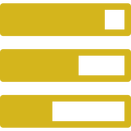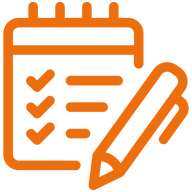Ambystoma mexicanum
Axolotls are commonly known as Mexican Walking Fish, despite not being a fish at all. They are an amphibian and are an aquatic species known for their ability to regenerate missing limbs and vital organs. They are thriving in the captive bred trade, but are endangered in the wild.
|
Enclosure Adult axolotls grow to be around 9-12". 10 gallons of aquarium space is needed per axy, but more space is definitely preferred. A 20 gallon long aquarium is a good start for a single axy - 10 additional gallons is needed per axolotl. Babies and juveniles can be housed temporarily in smaller aquariums. They prefer floor space over height. Axolotls can be great jumpers - be sure to provide a lid. Like all aquatic species, axolotls require pristine water conditions. Make sure your tank is completely cycled before bringing home your new axolotl. More information on cycling an aquarium can be found here. Putting an axolotl in a newly set up aquarium without fully cycling it first will cause extreme stress and potential death to your new pet. This is a pet you need to plan ahead for and set up a proper aquarium before you bring one home. Cycling a tank can take weeks, so be sure to be prepared. |
|
Substrate
A variety of substrates can be used your axolotl tank, including none at all. Axolotls eat their food by sucking it into their mouths, so it is vital to choose a substrate that is safe and won't cause impaction. Fine sand is safe and looks nice, but can be more difficult to clean. Bare bottom tanks are easiest to clean, but are not as visually pleasing. Large smooth rocks that are too big to be ingested are another choice. Avoid gravel, as the sharp edges can cause injury and impaction. Axolotls are curious creatures and WILL ingest anything that will fit into their mouths. |
|
Compatibility
Baby and juvenile axolotls need to be housed alone, as they will go after anything that moves and often harm each other. Adult axolotls usually get along if there is enough space and food, however, watch them closely for signs of incompatibility and be prepared to separate if they are injuring one another. If males and females are kept together, expect eggs. Females can lay infertile eggs even if kept alone. |
|
Heating
Axolotls are EXTREMELY sensitive to heat. Ideal temperatures are between 60-68 degrees F. Anything over 75 will cause extreme stress, health problems and potential death. Do not use an aquarium heater, and choose a light with low heat output to keep temperatures low. Choose wisely when deciding where to set up your tank - avoid windows, heaters or warm areas of your home. Keeping an aquarium near a window will also cause excess algae issues as algae thrives on light. Aquarium chillers are available to help keep water temperatures low, but are pricey. An alternative is to use a small fan pointed on the surface of the water, but this will cause faster evaporation of the water level.
|
|
Cage Decor
Since axolotls thrive best in low light conditions, live plants don't normally do well in axy tanks. Fake plastic plants provide nice decor. Be sure to offer a variety of caves for them to hide in. Terra cotta pots, aquarium caves and PVC tubes all make great hides. Avoid anything with sharp edges, as they have fragile skin. Be sure any hides or decorations do not have holes they can get stuck in, as they are curious creatures. |
|
Morphs
Axolotls in the wild are a dark, blotchy black, green or brown. In captivity, there are a variety of morphs. Some even glow under fluorescent light, due to a Green Fluorescent Protein gene scientists used to study their regeneration abilities. Some of the most common morphs are leucistic, melanoid, albino, golden albino and copper. |
|
Water
Water quality is very important for axolotls. Weekly water changes of 20% should be done to ensure high water quality. Be sure to use a water conditioner to remove chlorine and contaminates from the water. A freshwater testing kit can be used to test the water to be sure levels stay safe for your axolotl, or take a sample to your local fish store for testing. Avoid test strips, as they are highly inaccurate. Proper water parameters for an axolotl: PH: 7.4 - 7.6 Nitrate: under 20 ppm (parts per million) Nitrate: 0 ppm Ammonia: 0 ppm |
|
Feeding Baby and juvenile axolotls usually need live, moving food to eat. Try to avoid getting a baby that is not adapted to readily available food. As they get older, they learn to eat a bigger variety of food, including frozen bloodworms, live blackworms, live chopped up earthworms or night crawlers and sinking carnivorous pellets. Feed younger axolotls every day, but adults can be fed 2-3 times per week, as much as they will eat in a 10 minute span of time. Remove uneaten food to prevent clouding the water. |
|
Shopping List
*optional |




























